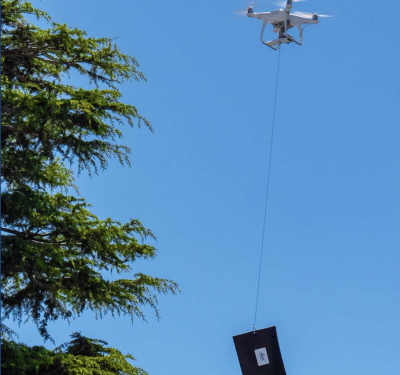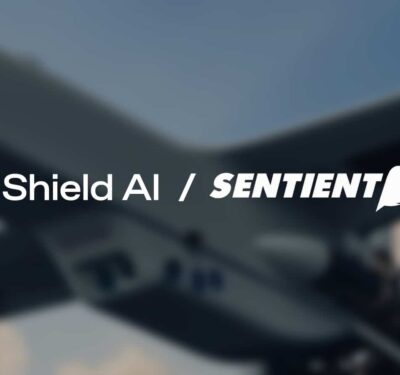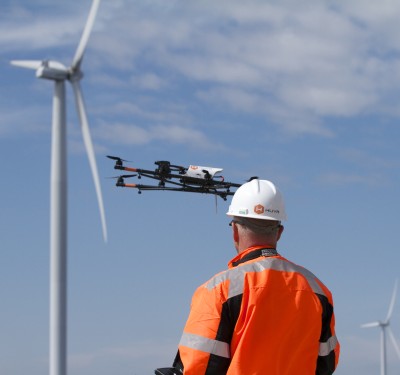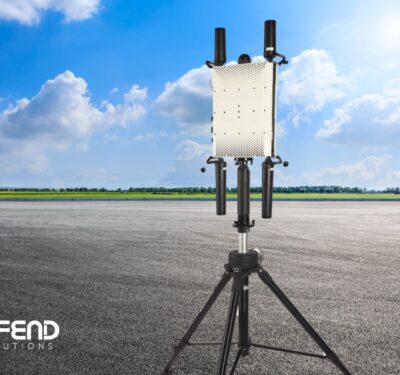Terra Drone Corporation, a Japanese drone and Advanced Air Mobility (AAM) company, with affiliated partners Unifly NV of Belgium and Aloft Technologies Inc. of the United States, have embarked on a joint initiative to develop a unified UAS Traffic Management (UTM) system aimed at accelerating the deployment of AAM solutions globally.

The joint venture focuses on integrating each company’s unique capabilities to create a robust UTM platform that supports both manned and unmanned air traffic. Terra Drone brings extensive experience in UTM operations and drone technology, and Unifly has worked on national-level UTM solutions in several countries, contributing expertise in air traffic management. Aloft, with substantial UTM experience in the U.S., adds operational knowledge and market reach. Aloft has surpassed 1 million Low Altitude Authorization and Notification Capability (LAANC) requests.
Together, these companies aim to tackle the challenges associated with the safe and efficient integration of electric vertical take-off and landing (eVTOL) aircraft into crowded urban environments and diverse airspace systems. Their goal is to create a UTM system that enhances operational efficiencies and ensures safety across all aspects of AAM operations. The partnership is poised to leverage advancements in eVTOL technology, which have the potential to transform urban transport by providing quicker and more efficient movement of goods and individuals, especially in densely populated areas.
The collaboration also seeks to engage a wide range of stakeholders, including eVTOL manufacturers, vertiport operators, aviation authorities, and urban planners to approach airspace integration holistically. This inclusive strategy aims to foster widespread adoption and implementation of UTM solutions across different regions and regulatory environments, leveraging shared technologies while solving for regional differences.

Inside Unmanned Systems connected with Yuki Ueno, executive officer, Terra Drone, Andres Van Swalm, CEO, Unifly and Jon Hegranes, CEO, Aloft Technologies, to better understand the strategic partnership and its goals.
IUS: Terra Drone’s mission is to “Unlock X Dimensions” and foster innovation across multiple industries. How does this vision translate into your work in the UTM and AAM sectors?
Ueno: Our mission to “Unlock X Dimensions” drives us to create new possibilities and solutions by integrating diverse disciplines. In the context of UTM and AAM, this vision is reflected in our collaborative efforts with three companies. By applying the UTM knowledge and experience we’ve gained from our work with drones, we aim to develop a robust air infrastructure that supports the seamless operation of drones and AAM vehicles. This innovative approach will not only enhance transportation efficiency but also contribute to solving pressing social issues, such as traffic congestion.
IUS: Terra Drone integrates proprietary technologies in drones, sensors and software. Can you discuss how these technologies contribute to the safety and efficiency of UAM operations?
Ueno: Terra Drone has extensive experience as a solution provider and a deep understanding of the industry. Additionally, Terra Drone has developed UTM technologies. This rare and unique combination of expertise makes it an exceptional player in the UTM field. To effectively provide drone solutions, it is crucial to possess not only hardware knowledge but also operational know-how. Similarly, for the development of UTM for AAM, it is essential to focus on both system construction and operational perspectives to ensure healthy industry growth.
IUS: With operations in multiple countries, how does Terra Drone adapt its UTM solutions to meet the diverse regulatory and operational requirements of different regions?
Ueno: Every country has unique drone regulations, languages and cultures. Terra Drone has been involved in the drone and UTM business globally, with a track record of successfully promoting standardization and facilitating the transfer of advanced technologies across borders. Our extensive international experience allows us to balance the specific requirements and intentions of local aviation authorities with market characteristics while adhering to standardization principles.
IUS: Terra Drone is a shareholder in both Unifly and Aloft. How do these partnerships enhance Terra Drone’s capabilities and influence in the UTM market?
Ueno: Terra Drone’s partnerships with Unifly and Aloft significantly bolster our capabilities and influence in the UTM market. By launching a joint development initiative focused on UAS Traffic Management for Advanced Air Mobility, we are leveraging the unique strengths of each company to create a pioneering global UTM infrastructure.
Unifly brings invaluable expertise with its extensive experience in implementing UTM systems at the national level in countries such as Canada and Germany. Their strong track record in regulatory compliance and air traffic management enhances our ability to ensure the safe integration of drones and eVTOLs into existing airspace.

Aloft Technologies, with its dominant market share in the U.S., specializes in UTM and fleet management solutions that align with FAA regulations. Their established platform supports governmental and commercial drone operations, providing essential tools for flight planning and operational safety. Aloft’s collaboration with regulatory bodies and stakeholders ensures that our UTM solutions are tailored to the evolving needs of the AAM sector.
Through this collaboration, Terra Drone, Unifly, and Aloft aim to address the rapid growth in the eVTOL market, which is projected to significantly transform urban transportation. By enhancing our existing UTM platforms with advanced automation and digitization features, we are not only streamlining operational efficiencies but also setting new standards for UTM integration into AAM.
This partnership positions us as leaders in the UTM sector, enabling us to create a cohesive ecosystem that supports the growth of AAM while addressing broader challenges such as urban mobility and air traffic safety. Our shared vision is to facilitate the seamless integration of drones and eVTOLs into daily life, ultimately revolutionizing transportation on a global scale.
IUS: What are some of the key projects or innovations Terra Drone is working on to advance UTM and AAM technologies?
Ueno: Unifly is participating in the European SESAR project and is working on U-space’s U3—U-space advanced services supporting more complex operations in dense areas, such as assistance for conflict detection and automated detect-and-avoid functionalities. EUREKA, SPATIO and ENSURE are examples of projects where Unifly’s UTM is used.
For example, EUREKA is a case study in Spain. Working with AESA, the Spanish Civil Aviation Authority, ENAIRE, the Spanish ANSP, AENA, a subsidiary that manages airports, and INDRA, which develops air traffic control systems, Unifly has taken control of UTM and is collaborating to develop solutions for UTM and Vertiport integration.
Hegranes: Aloft is committed to advancing UTM and AAM technologies through innovative projects that enhance situational awareness, coordination and communication. Our industry-led approach, combined with partnerships like NUAIR, positions us at the forefront of this rapidly evolving field, driving forward the future of aviation.
At the heart of our efforts is our collaboration with NUAIR, where we serve multiple airspace stakeholders, driven by industry demand to create a common operating picture. Aloft and our partners in the NUAIR Center of Excellence are pushing the envelope of technologies to meet the needs of our airspace stakeholders that span BVLOS delivery operations to public safety. By leveraging a combination of Aloft’s capabilities—including live traffic feeds, airspace authorization, and the real-time sharing of flight plans and volumes—the common operating picture around Syracuse is truly leading edge.
One of our key initiatives is the development and integration of live traffic feeds. By providing real-time updates and detailed flight information, we enable stakeholders to have a comprehensive and dynamic view of the airspace. This is crucial for both safety and efficiency, as it allows for better decision-making and proactive management of potential conflicts.
Another significant area of advancement is the sharing of flight plans. Aloft’s platform facilitates the seamless exchange of flight plans among operators, air traffic controllers, and other stakeholders. This shared situational awareness is vital for the safe and efficient operation of both manned and unmanned aircraft, paving the way for the integration of AAM technologies.

IUS: What are the biggest regulatory challenges you face regarding U Space in Europe, as well as broad regulatory challenges globally?
Ueno: The implementation of U-space in January 2023 marked a significant milestone, and aviation authorities across Europe continue to collaborate with EASA to certify the processes. The Port of Antwerp project stands as a pioneering initiative in this domain, exemplifying the advanced integration of UTM and AAM solutions. It is hoped that similar initiatives will be implemented in more countries and regions.
As for drones and AAM, although there are various differences, we believe that the same UTM system will be responsible for operational management. This is because a system developed on the basic premise of automation and digitalization is essential. Currently, air traffic control is over capacity with existing aircraft alone, so this kind of innovative flight operation management system will become extremely important. In fact, the requirements for drones and AAM are different, but it is not that a completely new system is needed; rather, the evolution of the existing UTM for drones will also manage AAM operations.
IUS: How do you foresee UTM and AAM technologies transforming urban mobility over the next decade? What are the most significant benefits and potential obstacles? Conversely, what are the initiatives and deployments most ready and mature today?
Ueno: Without UTM and UTM for AAMs, it is difficult to fly drones and AAMs safely and efficiently. Without such operational management systems, the dissemination of drones and AAMs will be increasingly slow. Therefore, we believe it is our role to advance the social implementation of drones and AAM by developing and maturing systems such as UTM for AAM. Moreover, once UTM and UTM for AAM are realized, 1-to-n operations and unmanned/automated operations will become possible, allowing the benefits of drones and aerial vehicles to be maximized.
IUS: With increasing attention on sustainability, how are your companies addressing the environmental impacts of autonomous systems and urban air mobility?
Andres Van Swalm: At Unifly, sustainability is at the heart of our UAS Traffic Management technology. We are deeply committed to addressing the environmental impacts of autonomous systems and urban air mobility through innovative and responsible practices.
Our UTM solutions facilitate the seamless integration of drones into the airspace, prioritizing the use of electric and hybrid UAVs. By optimizing flight paths and reducing congestion, we significantly cut carbon emissions, aligning our efforts with Europe’s Green Deal objectives. This makes our systems a sustainable alternative for urban mobility, especially as urban areas face increasing congestion.
Our dynamic airspace reconfiguration capabilities ensure UAVs can avoid congested areas, adapt to changing conditions, and maintain optimal traffic flow. This enhances energy efficiency and minimizes the environmental footprint of drone operations. By replacing traditional, carbon-heavy transportation methods with drones, we contribute to a greener, more sustainable future.
In the health care sector, our UTM solutions enable rapid delivery of medical supplies, improving efficiency and potentially saving lives. Projects like SAFIR-Med and HealthDrone exemplify our role in transforming health care through efficient drone operations.
Our commitment to sustainability is reinforced by our comprehensive stakeholder engagement and materiality analysis, focusing on product quality, data security, privacy, employee health and wellbeing, economic performance, and carbon emissions. These efforts ensure our solutions meet the highest sustainability standards.
Unifly’s mission aligns closely with the European Commission’s vision for a sustainable future. This alignment has led to our platform and applications receiving substantial funding—up to 70%—from regional and European research and innovation initiatives. By 2050, it is projected that 68% of the world’s population will live in cities, making urban sustainability crucial. Drones can significantly increase operational efficiency in urban environments, reducing congestion and carbon footprints. unmanned aerial vehicles are cost-effective, flexible, and capable of tasks such as infrastructure inspection and control.
We have developed partnerships with major drone operators, governments and cities to continuously innovate and test our software, ensuring sustainable solutions in urban settings. Drones enhance public safety through surveillance, monitoring large crowds, spotting criminal activity, and assisting emergency services. For instance, the police zone of Limburg deploys drones after traffic incidents for faster and more efficient analysis.
Unifly has also contributed to the development of legislation, standardization, and cybersecurity measures essential for safe drone operations. Our projects with the European Space Agency and Federal Aviation Authority are examples of our dedication to safe and efficient drone integration.
Innovation is at the core of Unifly’s activities, contributing positively to the ratio of R&D expenditures as a proportion of GDP. A thriving drone landscape offers significant opportunities for economic growth, job creation, and increased purchasing power. The integration of drones into everyday life has the potential to boost GDP and improve quality of life.
Unifly’s commitment to sustainability and innovation drives our efforts to create a greener, safer, and more efficient aviation industry. Through continuous collaboration and cutting-edge technology, we are leading the way in sustainable urban air mobility and autonomous systems, making a positive impact on both the planet and society.






